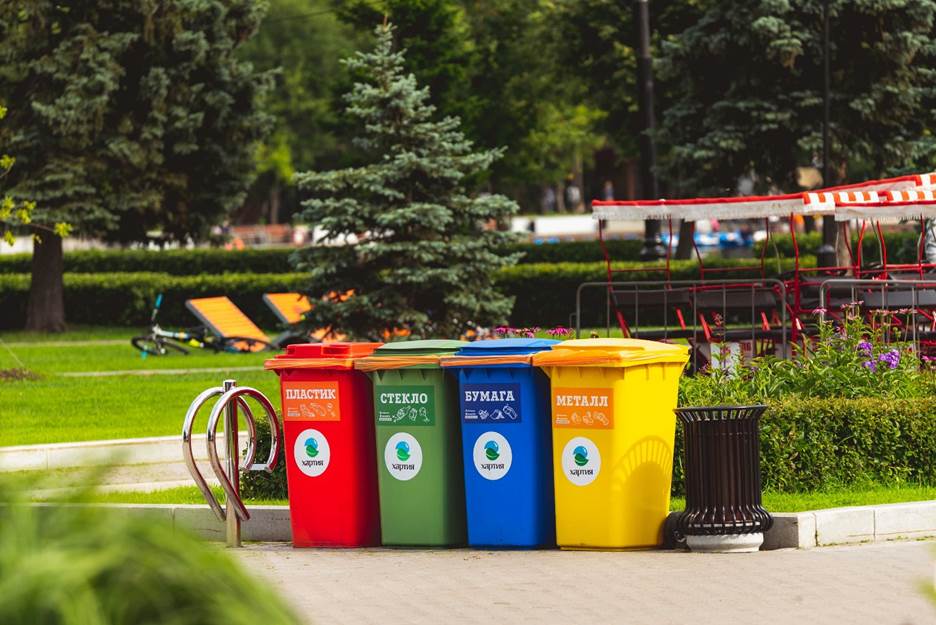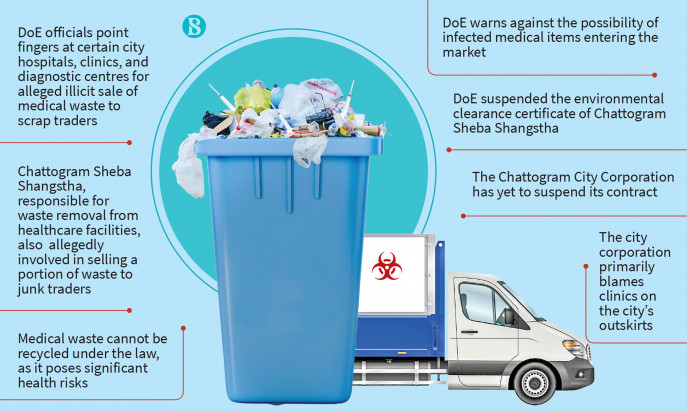Safeguarding Health And Wellness: Specialist Medical Waste Removal Services for a Clean Atmosphere
Safeguarding Health And Wellness: Specialist Medical Waste Removal Services for a Clean Atmosphere
Blog Article
Keep Ahead of Rules: Specialist Guidance on Medical Waste Disposal
In a world where the healthcare sector is frequently developing, it is important for clinical centers to stay in advance of guidelines when it comes to the appropriate disposal of clinical waste. From comprehending the various groups of medical waste to implementing the best collection and segregation approaches, this discussion will certainly offer beneficial insights and actionable pointers to assist centers stay in advance of laws in the ever-changing landscape of clinical waste disposal.
Recognizing Clinical Waste Categories
Understanding medical waste categories is vital for proper disposal and administration in medical care facilities. Medical waste describes any waste produced by health care tasks that might pose a risk to public health or the environment. It is vital to categorize clinical waste accurately to guarantee its safe handling, disposal, transportation, and treatment.
There are a number of categories of medical waste that health care centers need to be accustomed to. One of the most usual groups include contagious waste, pathological waste, sharps waste, pharmaceutical waste, and chemical waste. Each group has details guidelines and policies for its proper management and disposal.
Contagious waste consists of materials polluted with blood or other bodily fluids, such as handwear covers, gowns, and lab cultures. Pathological waste refers to human cells, body organs, or body components that call for special delivery and disposal. Sharps waste consists of made use of needles, syringes, and various other sharp items that can trigger injury and transmit infections. Drug waste consists of run out, unused, or infected drugs that require mindful handling and disposal. Chemical waste includes solvents, anti-bacterials, and other chemical substances utilized in healthcare facilities.
Staying Up-To-Date With Regulatory Modifications
Remaining current with governing adjustments is important for medical care facilities to guarantee conformity and correct monitoring of clinical garbage disposal. medical waste removal. With guidelines constantly advancing, it is crucial for medical care centers to stay up-to-date to avoid fines, fines, and potential injury to the atmosphere and public health
To remain ahead of regulatory adjustments, health care facilities must establish a system for surveillance and tracking updates. This can be done by subscribing to governing e-newsletters, attending meetings and workshops, and actively joining market organizations. Furthermore, facilities need to assign an employee or team in charge of remaining notified and disseminating details to relevant stakeholders.
Routine communication with regulative firms is likewise vital. Healthcare centers ought to develop relationships with regional, state, and government agencies to guarantee they understand any type of changes in guidelines that might impact their waste administration techniques. This can be done through routine conferences, participation in public comment durations, and aggressive interaction with governing agencies.
Furthermore, healthcare centers ought to consider partnering with waste monitoring business that specialize in clinical waste disposal (medical waste disposal services with WasteX). These business are often well-versed in the most up to date regulations and can offer support and assistance to ensure compliance
Carrying Out Correct Collection and Partition Approaches
To efficiently take care of clinical waste disposal, healthcare facilities must establish appropriate collection and segregation methods according to governing standards. Applying these approaches ensures the risk-free handling and disposal of possibly harmful materials, safeguards the atmosphere, and reduces the risk of infections and injuries to healthcare employees and the public.
Correct collection and partition techniques involve using marked containers and classifying systems. Medical care facilities ought to provide plainly identified containers for different sorts of clinical waste, such as sharps, transmittable waste, pharmaceutical waste, and non-hazardous waste. These containers ought to be color-coded and clearly significant to stay clear of confusion and advertise very easy recognition.
Furthermore, medical care centers ought to train their staff on the proper treatments for gathering and segregating medical waste. This consists of informing them on the different kinds of waste, the proper containers to use, and the importance of adhering to guidelines and guidelines. Normal training sessions and correspondence course must be conducted to make certain that personnel members stay up-to-date on finest practices.
Moreover, healthcare centers should develop a system for regular collection and disposal of clinical waste. This might entail partnering with accredited waste administration companies that concentrate on medical waste disposal. These firms will certainly ensure that the accumulated waste is delivered and taken care of in compliance with regulative requirements.
Selecting the Right Disposal Approaches

Incineration is among one of the most reliable and usual approaches for dealing with certain types of medical waste, such as pathological waste and sharps. It involves the controlled combustion of waste at high temperatures, reducing it to ash. However, incineration here are the findings can release hazardous pollutants into the air and add to air contamination.
Various other disposal techniques include chemical therapy, microwave treatment, and landfilling. Chemical therapy involves using chemicals to reduce the effects of the waste and disinfect. Microwave therapy makes use of microwave energy to warmth and sanitize the waste. Landfilling entails burying the waste in a marked landfill location (medical waste disposal services with WasteX). However, landfilling must be the last resource due to the possible risk of contamination to soil and groundwater.
Guaranteeing Compliance Through Documentation and Training
After thoroughly thinking about the suitable disposal techniques for medical waste, healthcare facilities must ensure compliance with laws and decrease ecological influence by carrying out efficient paperwork and training procedures. This step is essential in maintaining a safe and lasting environment for both medical care employees and the public.

Training is just as essential in making certain compliance with guidelines. Medical care workers that handle medical waste must receive proper training on waste partition, managing, and disposal treatments. This training should cover subjects such as the correct use of personal safety tools, recognition of different sorts of waste, and the appropriate disposal techniques for each and every waste category. By offering detailed training, medical care centers can encourage their team to make informed decisions and lessen the threat of improper waste disposal.
Final Thought
Finally, remaining ahead of regulations in clinical garbage disposal is important for health care facilities. medical waste removal near me. Recognizing the different categories of medical waste, remaining updated with regulatory changes, applying appropriate collection and segregation methods, picking the proper disposal methods, and ensuring conformity with documentation and training are all essential actions. By complying with these guidelines, medical care organizations can efficiently dispose and handle of medical waste in a secure and accountable manner
From recognizing the different categories of clinical waste to implementing the appropriate collection and segregation approaches, this discussion will certainly offer valuable understandings and workable ideas to aid facilities remain ahead of guidelines in the ever-changing landscape of medical waste disposal. - medical waste disposal services with WasteX
The most usual categories include contagious waste, pathological waste, sharps waste, pharmaceutical waste, and chemical waste. Medical care centers should offer clearly identified containers for different kinds of clinical waste, such as sharps, transmittable waste, pharmaceutical waste, and look these up non-hazardous waste. Medical care centers should establish a detailed system to tape and track all aspects of clinical waste disposal, including types of waste generated, quantities, and disposal methods used. Health care workers who deal with medical waste ought to receive suitable training on waste segregation, handling, and disposal procedures.
Report this page